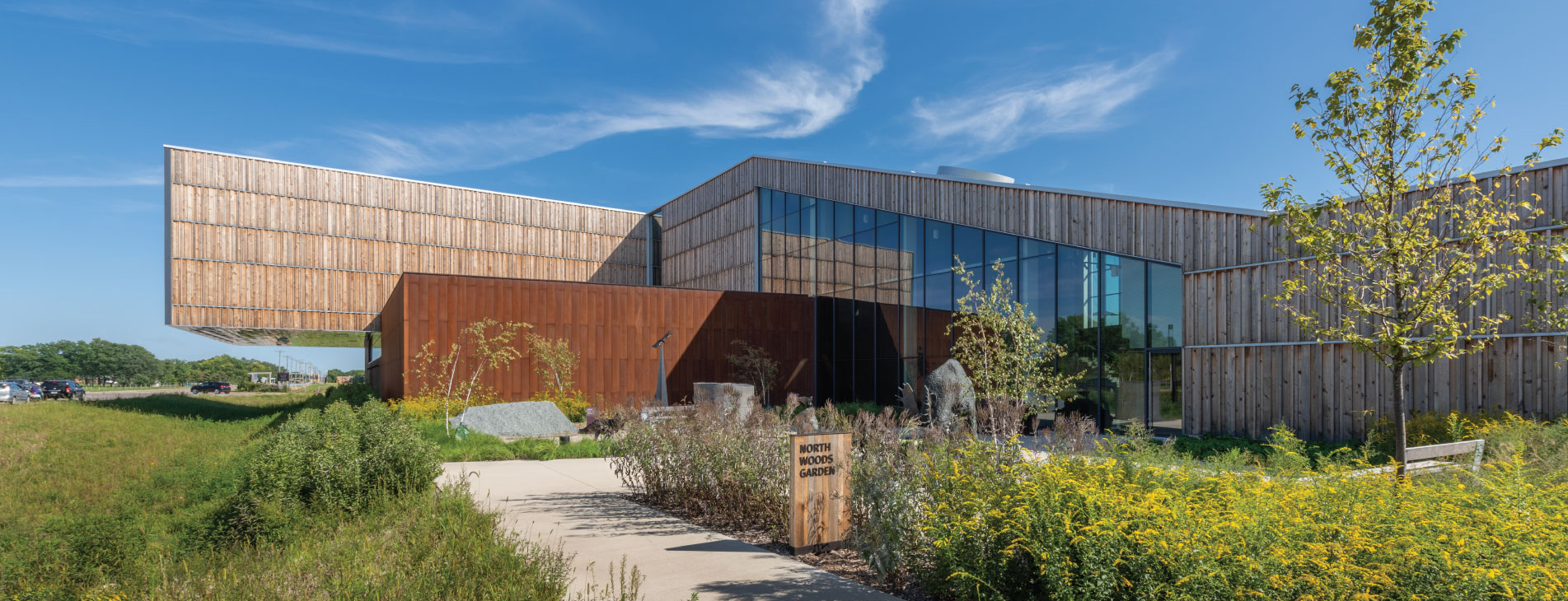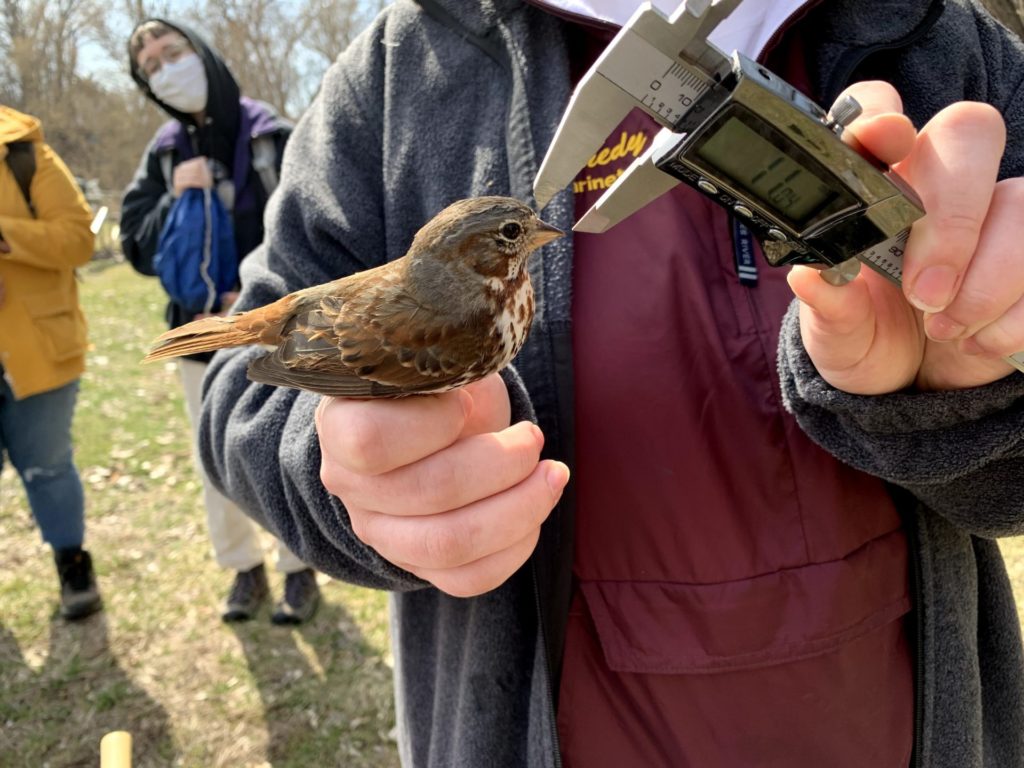
Understanding a Diverse Environment through Data Collection
Curator of Fishes Andrew Simons co-teaches a course about different field research and data collection methods
Published04/13/2021 , by Emily Dzieweczynski
As we approach nature with eyes wide open and ears ready to listen, we realize just how diverse the environment is—so, too, are the methods we’ve developed to understand and measure it. Bell Museum Curator of Fishes Andrew Simons is co-teaching a course with Mags Edward, a former graduate student now working for the Minnesota Department of Natural Resources, at the University of Minnesota that explores different ways of measuring, analyzing, and, ultimately, understanding our environment.
The course, Field Methods in Research and Conservation of Vertebrate Populations, aims to help students develop skills and confidence needed to conduct effective field research. While focusing on Minnesota ecology, students learn the basics of species identification, methods of data collection, and research methods.
During the class, students explore many different ways of understanding their environments through data collection. They cover methods such as telemetry, bird point counts, amphibian surveys, sampling for fishes, and trap-grid and remote-camera data. Students learn the importance of both research and communication, as they consider how their research can play into the larger context of environmental implications and decisions.

A student measures a bird’s beak after a day of mist netting at the Bell
Originally offered during the summer in remote locations of Minnesota, the course has shifted to being held in the spring semester and in the Twin Cities—making it all over more accessible for students. In addition, due to COVID, the course is being offered as a hybrid model, with some in-person and virtual learning. Simons reports that this model has offered a bit of relief amidst Zoom-filled days, as students are able to engage with one another safely distanced conducting research in the field.
The experience of conducting field-based research tends to be a powerful one for students, as it offers insight into both the beauty and pitfalls of research. While students are often met with wonder and awe as they explore the diversity of Minnesota’s landscape, they also encounter all that can go wrong—from faulty gear to stolen equipment—and must problem-solve to troubleshoot it.
One highlight of the class thus far has been the remote-camera data collection project—and for the team at the Bell, it’s revealed some interesting information about the visitors who come late at night. During this project students collaborate with The Canid Project. The Canid Project is an organization dedicated to educating the public about the canid species—wolves, coyotes, and foxes, for example—through photography, writing, workshops, and community outreach. One of their goals as an organization is to share how photography can be more than a form of art, but can also be used for conservation. By capturing images of canid species with remote-cameras that capture images at periodic intervals, researchers can begin to understand the movement and quantity of canid sightings. The project in Simons’ course contributes to this effort by installing remote-cameras throughout the Twin Cities Metro area, in hopes of documenting canid species to add to a database. On a whim, Simons decided to install a remote-camera at the Bell and discovered some late-night visitors.

Remote-cameras at the Bell captured images of canid species such as fox and coyotes
This observation sparked a larger conversation amongst Bell staff—what other creatures are visiting the Bell? Are there ways we could be monitoring and measuring this biological diversity at our doorstep? A team of dedicated individuals at the Bell are entertaining the idea of installing a comprehensive monitoring and data collection system on the Bell’s Learning Landscape to measure and document the creatures that visit. They hope that Simons’ remote-camera experiment could set a baseline for how we might catalog or track different species. Gallery Programs Coordinator Heather Cummins talks about how this project could help demonstrate the importance of the Learning Landscape to our visitors.
While the Learning Landscape is a built landscape, it has nonetheless taken on a life of its own—growing and expanding with new creatures and life each year. With spring upon us, pond life will explode with tadpoles, toads, and many, many insects. Cummins, one of the Bell’s resident entomologists, hopes to start collecting bugs in the spring by using a passive trapping method. As many new creatures are arriving at the Bell’s landscape all on their own, the team is excited to document and understand them using various data collection methods.
As Cummins examines insects through passive trapping and Simons documents canids through photos, we can see that understanding the environment through data collection can take many forms. For example, one interesting way to understand your environment is through sound—a simple form of data collection that you can try for yourself! Birds, frogs, and toads are all particularly vocal with the onset of spring. In fact, it’s even possible to listen to fish—with the proper recording equipment, there’s a whole world of sound under the water! If you’re interested in data collection and want to try your hand at it—go outside and listen!
An audio recording of fishes at a reef off the coast of Australia from the article, Fish choruses off Port Hedland, Western Australia, by Parsons et al.

